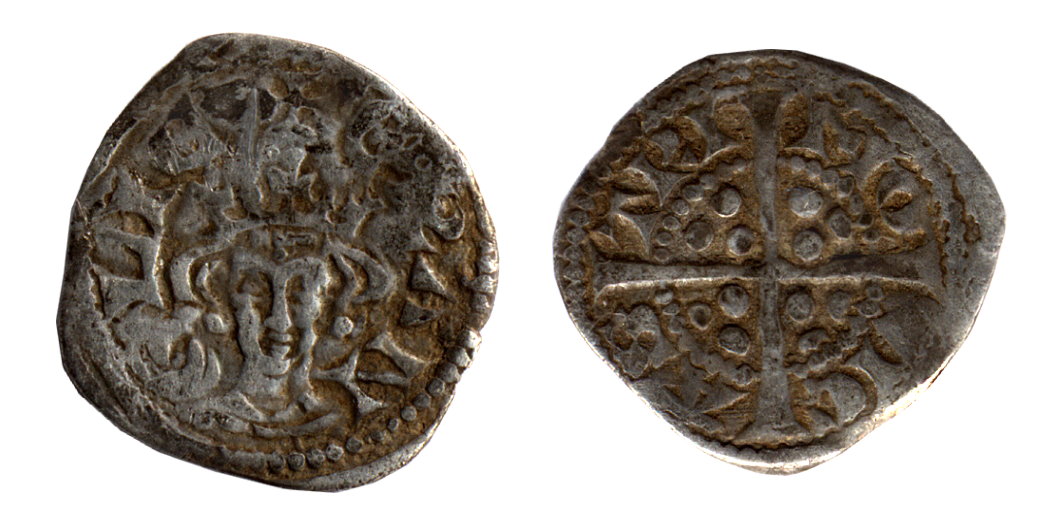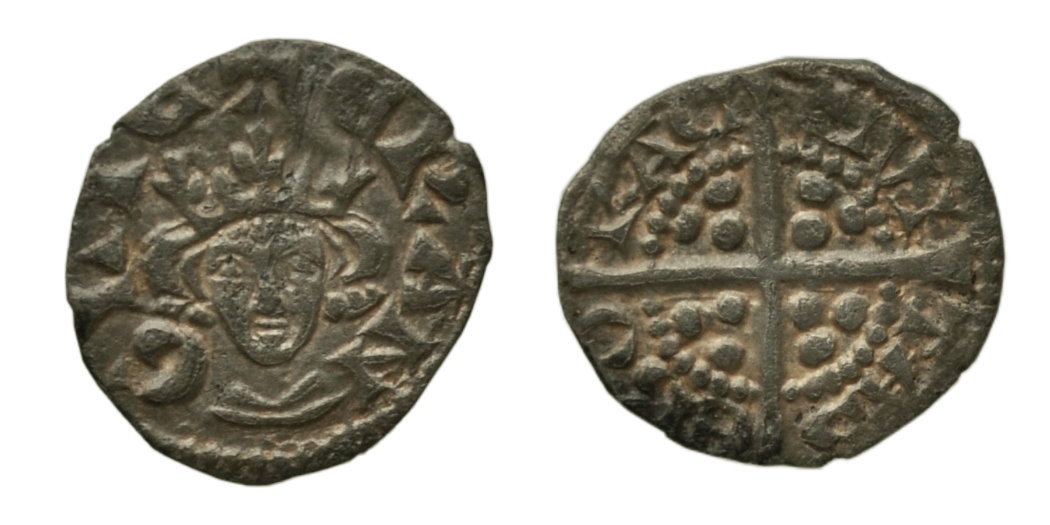
Berwick
In 1279, Berwick was under Scottish rule, and therefore had no involvement in the initial recoinage process. However, in 1296, in response to a Scottish attack on Carlisle, Edward I invaded the town and brought it under English jurisdiction. Shortly after its capture, Berwick began striking English coins. However, despite the coins being of English type, most were struck from locally made dies, and do not conform to the classification system applicable to the remainder of the Edwardian coinage. The town changed hands twice again during the period under consideration, as a result of which the issue of English coins is split into the two periods, 1296-1318 and 1333-1344. The reverse legend is VILLA BEREVVICI or one of the following variants: VIIA BEREVVICI, VILLA BEREWIC, VILLA BEREWICI, VILLA BERVICI, VILLA BERVVICI, VILLA BEWICI, VLLLA BERVICI and WILLA BERVICI. Colon or pellet stops are sometimes present.

Bristol
The mint at Bristol was active during the initial recoinage, between 1280 and 1281, and struck farthings of types 2, 3c, 3d and 3g. Bristol also participated in the later recoinage of 1300, but did not strike any farthings during this period. The reverse legend is VILLA BRISTOLIE or VILLA BRISTOLLIE.

Lincoln
The mint at Lincoln was active during the initial recoinage, between 1280 and 1281, and struck farthings of type 3d. Unlike the other provincial mints opened for the initial recoinage, it didn't participate in the later recoinage of 1300. The reverse legend is CIVITAS LINCOL'.

London
London was the country's principal mint and struck farthings of all known types in the series (technically except 3e, the northern equivalent of the southern 3d). It was the only mint to strike farthings of types 1a, 1c, 4de, 5, 6-7, 8, 9a, 9b,10, 10-11, 13, 15d, and the star-marked issues, SM1 and SM2*. The reverse legend is LONDONIENSIS (Types 1a-3g), LONDRIENSIS (Types 1a and 1c) or CIVITAS LONDON (Types 4de-SM2).
* Reading probably also struck star-marked farthings, but no specimen has yet been found.

Newcastle
The mint at Newcastle was active during the initial recoinage, between 1280 and 1281, and struck farthings of type 3e. It also participated in the later recoinage of 1300, but did not strike any farthings during this period. The reverse legend is shortened to NOVI CASTRI (i.e. it is not preceded by VILLA). The letter N in NOVI has a pellet on the bar.

York
The mint at York - it should be noted that this is the royal, not the ecclesiastical, mint - was active during the initial recoinage, between 1280 and 1281, and struck farthings of types 2, 3c and 3e. It also participated in the later recoinage of 1300, but did not strike any farthings during this period. The reverse legend is CIVITAS EBORACI.





